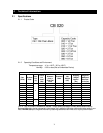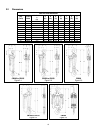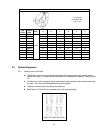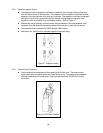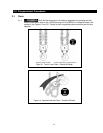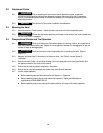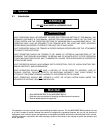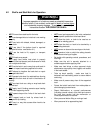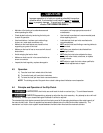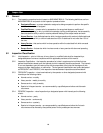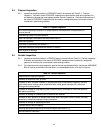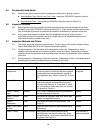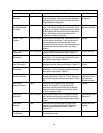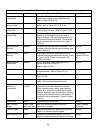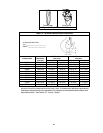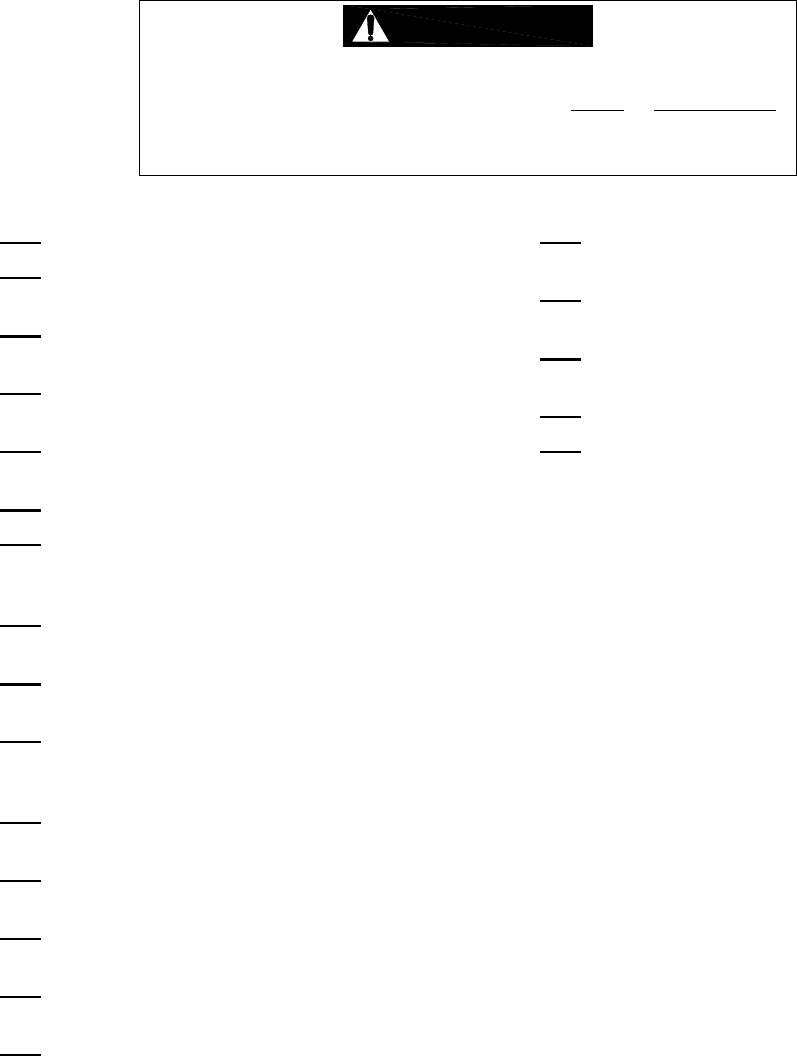
14
4.2 Shall’s and Shall Not’s for Operation
Improper operation of a hoist can create a potentially hazardous
situation which, if not avoided, could result in
death or serious injury
,
and substantial property damage. To avoid such a potentially
hazardous situation THE OPERATOR SHALL:
•
NOT
•
lift more than rated load for the hoist.
NOT
•
use damaged hoist or hoist that is not working
properly.
NOT
•
use hoist with twisted, kinked, damaged, or
worn chain.
NOT
•
use hoist if the bottom hook is capsized
(multiple fall hoists - see Section 3.1).
NOT
•
use the hoist to lift, support, or transport
people.
NOT
•
lift loads over people.
NOT
•
apply load unless load chain is properly
seated in the load sheave (and idle sheave for hoist
with multiple chain falls).
NOT
•
use the hoist in such a way that could result in
shock or impact loads being applied to the hoist.
NOT
•
attempt to lengthen the load chain or repair
damaged load chain.
NOT
•
operate hoist when it is restricted from forming
a straight line from hook to hook in the direction of
loading.
NOT
•
use load chain as a sling or wrap load chain
around load.
NOT
•
apply load if binding prevents equal loading
on all load-supporting chains.
NOT
•
operate beyond the limits of the load chain
travel.
NOT
•
support load on hook tip unless hook is
designed for tip loading.
NOT
use in a way that causes either hook to be
side-loaded.
•
NOT
•
leave load supported by the hoist unattended
unless specific precautions have been taken.
NOT
•
allow the chain, or hook to be used as an
electrical or welding ground.
NOT
•
allow the chain, or hook to be touched by a
live welding electrode.
NOT
•
remove or obscure the warnings on the hoist.
NOT
• Be familiar with operating controls, procedures, and
warnings.
operate a hoist on which the safety placards
or decals are missing or illegible.
• Make sure the unit is securely attached to a
suitable support before applying load.
• Make sure load slings or other approved single
attachments are properly sized, rigged, and seated
in the hook saddle.
• Take up slack carefully - make sure load is
balanced and load-holding action is secure before
continuing.
• Make sure all persons stay clear of the supported
load.
• Protect the hoist’s load chain from weld splatter or
other damaging contaminants.
• Report Malfunctions or unusual performances
(including unusual noises) of the hoist and remove
the hoist from service until the malfunction or
unusual performance is resolved.
• Warn personnel before lifting or moving a load.
• Warn personnel of an approaching load.




